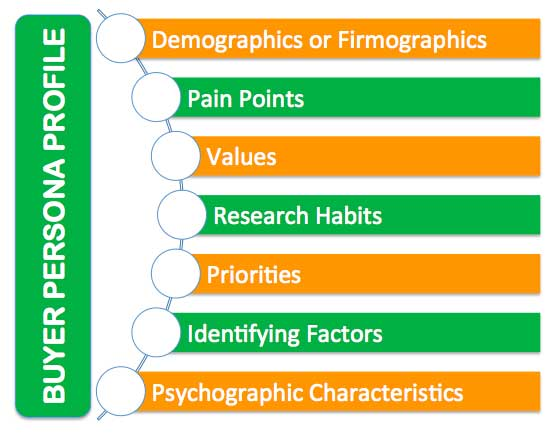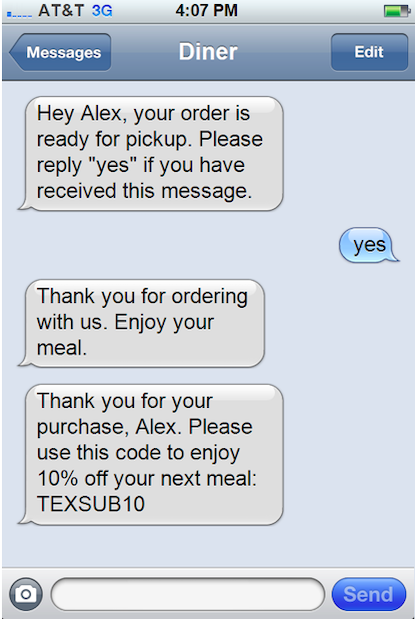Table of Contents
The shift has already happened.
As of September 2024, people using mobile devices contribute to 63.38% of all website traffic—and this number is increasing. Unsurprising to most, mobile phones have changed how people interact with brands since the spread of the smartphone.
If you’re thinking about adopting a mobile-first strategy, it’s never too late.
This is the guide to get you started.
What is mobile marketing
We can start by defining mobile marketing.
It is a digital marketing strategy that aims to reach an audience via phone, convey a message, or get them to take action.
The approach to achieving that varies, but it is often a multi-channel approach that ensures each channel is uniquely optimized for the mobile screen.
The common channels for mobile marketing are:
- Text messages
- Push notifications
- Emails
- Videos on social media
The messages conveyed through these channels are often time-sensitive, location-sensitive, highly targeted, and personalized.
The benefits of mobile marketing
The most obvious benefit of mobile marketing is that it means you are adapting to the times. The average user spends three hours on their phones every day, so ignoring mobile marketing is no longer an option.
But that’s not all:
Mobile marketing gets 30 times more responses than print ads, and it is easier to get mobile ads in front of a targeted audience.
97% of Americans have their mobile phones on them at all times, so the chances of your message not reaching them are minimal.
You reach your audience in no time at all. That means not only is there no delay in getting your message out, you get real-time customer responses, allowing you to alter your strategy if needed.
Creating a Mobile marketing strategy
Understanding the needs of a mobile user is the first step in building a successful mobile marketing strategy. You can convince them to invest in your business or organization by addressing those needs.
The first thing to note about mobile users is that while they may have their phones on hand most often, the time spent looking at their phone often comes in quick bursts. That means your messaging must be concise and bring value in the shortest time possible.
At the same time, not all audiences apply to all organizations. That means you must develop a unique strategy that works best for you.
You can do that by:
Defining your objectives
You may want to:
- Spread awareness about your brand
- Convert followers to customers
- Send offers to specific audiences
- Capture leads using ads
Defining your objectives in mobile marketing will inform the channels you use and the people you reach.
Defining your target audience
Who needs to see your message, and who is most likely to take action when they see it? Defining your target audience is important to save resources and deliver more impactful messages.
Chances are you have already developed an ideal buyer/audience persona for your organization. If you haven’t, now’s the time to start.
Develop your audience persona for mobile marketing by actively talking to customers. Here are some data points that can help you target your marketing strategy:

Optimizing your website and communication channels for mobile
Most of your messaging across marketing channels should lead users to a central place. That could be a physical store, but most often, it is a website or an app.
While a mobile-optimized website is not strictly necessary for you to start your mobile marketing strategy, it can help you by:
- Reducing your website load time
- Improving your search rankings
- Increasing user engagement
Similarly, make sure your marketing channels and messaging are optimized for mobile. We’ll discuss that further.
Integrating your marketing channels
If you are using more than one channel to reach mobile users, make sure they work together. If you’re using a CRM, make sure it is integrated with your marketing tools.
Making sure there is data flow between your tools can save you a lot of time when it comes to measuring the impact of your marketing strategy.
Mobile Marketing ideas
Mobile content marketing
Content marketing on mobile involves distinguishing between what kind of content works on mobile and what kind you generally publish online. On mobile, your content needs to be skimmable and easy to read.
The key to mobile content marketing is formatting for mobile. Make sure that your content is optimized by:
- Short, choppy copy. It might seem unconventional, but shorter copy is the best way to accommodate the attention span of a mobile audience.
- Using bold colors to capture your viewers’ attention as soon as they land on your page.
- Including calls to action that are easy to take, such as clickable email addresses and phone numbers, interactive maps, and image sliders.
- Adopting minimalistic visuals. Keeping your branding simple makes for a much more pleasant viewing experience on a small mobile screen.
Email mobile marketing
Email marketers are already marketing to a mobile audience whether they want to or not.
In 2018, reports concluded that at least 50% of emails were opened on mobile.
Making a splash with your mobile audience means optimizing your emails by:
- Using mobile-friendly visuals. If you use text in your images, send a few test emails to make sure they are readable on the smaller mobile screen.
- Having clear calls to action. Run A/B tests to see if buttons or text links work better for your audience.
- Keeping the layout clean and friendly. Make your email links easier to click by using larger font sizes.
- Keeping it light. The size of your emails should be under 25kb for text and 60kb with images for quick loading.
Mobile push marketing
Push notifications let you display pop-ups to your mobile audience if they have downloaded an app or have accepted notifications on your mobile site.
They appear in your mobile users’ notification bar, which means they are immediately visible the next time they pick up their phone.
Unlike emails and your web content, push notifications are a mobile-first way of marketing. Make the best use of them by:
- Communicating with brevity. Use hyper-specific copy to convey your message. Long copy can annoy your audience, especially if they have no choice but to see it if they opted in.
- Personalizing your message. If readers don’t feel connected to your push notifications, you can expect them to opt-out sooner rather than later.
- Timing your notifications. Chances are, your audience is spread across time zones, so sending your message to everyone at once isn’t a great idea.
- Using media to get your point across. According to studies, notifications with images do 9% better on average.
- Having a clear call to action. For example, YouTube has watch now/watch later options whenever users get notified about a video upload to foster immediate action.
Ticketmaster sends highly relevant push notifications to their customers with the help of geo-targeting and user histories.

Mobile video marketing
A video can tell an impactful story in just a few seconds. Use video storytelling to your advantage in your mobile marketing strategy.
Create impactful mobile videos by:
- Optimize your videos for lower bandwidth connections. Make sure videos load quickly and are under 15 seconds long to save your audience time and keep their attention.
- Offering something of value. Have a clear idea of what you want to convey and achieve before spending time to create your video.
- Focusing on branding. Include recognizable brand elements for a memorable video.
- Do not assume users have sound on. Nearly 85% of videos are viewed on mute, so you need to make sure your videos make sense without sound on.
Take a look at how Starbucks celebrated Pride Month with its customers in just 4 seconds.
Mobile text marketing
Text messages are a marketing channel that is native to mobile phones. With over 90% of SMS being opened and read, texting should be the crux of your mobile marketing campaigns.
Send text messages that provoke action from your audience by:
- Using a unique shortcode. A dedicated shortcode is a recognizable 5-6 digit number that your audience can immediately connect to your brand.
- Using concise, compliant, and relevant copy. You can increase conversions through text by striking the right balance between the three.
- Having text conversations. Texting isn’t limited to just mass texts broadcast to your audience. Have your texting agents engage your audience in compelling conversations with peer-to-peer texts.
- Using multimedia in your texting campaigns. Using MMS marketing can increase your click-through rates by as much as 15%.
Domino’s uses the shortcode 374992 to send delivery updates and discount codes to customers as well as enable them to make orders through text messages:

Location-based mobile marketing
Location-based marketing is based on mobile phones’ ability to track a user’s location with a high degree of accuracy.
According to research by Pew Institute, “74% of adult smartphone owners ages 18 and older say they use their phone to get directions or other information based on their current location.”
You can make the most of this by utilizing your mobile marketing channels to send location-based messages.
Here are some ways to use location-based mobile marketing:
- Hyper contextual targeting. Using hyperlocal data, you can spread relevant messages to an audience located within a set radius.
- Geo-aware targeting. Targeting can be done by using real-time location data of your audience, for example if they are within a certain radius of your store.
- Location-based targeting. Mobile ads can be sent to users that enter a certain pre-defined radius within a certain time-frame.
- Geo-fencing. This is similar to Location-based targeting in that you can target users in a fixed area based on latitude and longitude data from their phones. This type of targeting can be used to drive foot traffic to a store.
In 2013, Adidas used location extensions with their search campaigns, driving customers who were searching for a store to their store locator page. One out of five customers who clicked on the add ended up going to the store, leading to a 680% increase in ROI.

Mobile marketing platforms and tools
Picking the right tools is one of the first steps to getting your mobile marketing campaign up and running.
Mobile content marketing – WordPress
Since most of your content will be featured on your website, choose a website-building platform that is mobile-friendly and allows you to customize it.
A tool like WordPress is built to be mobile-friendly. WordPress’s introduction of its Accelerated Mobile Pages functionality dramatically improved page load time on mobile and tablet devices.
Another option if you are only hosting blog content for mobile audiences is to start a Medium blog. The site itself is built to be mobile-friendly, as well as all of its hosted blog pages.
Mobile text marketing – CallHub
CallHub is a texting tool built to make it easy to run texting campaigns. If you have your contact list and the message you want to send, all it takes is a few minutes to set it all up on the software.
Not only is setting up a campaign easy, the user interface for your peer-to-peer texting agents is intuitive. That means you can onboard them onto your campaigns and start having engaging conversations with your audience in no time.

Email mobile marketing – various
When it comes to mobile email marketing, there are plenty of tools out there that allow you to optimize for mobile devices, for example by allowing you to preview how your email draft shows up on a mobile device right in the tool.
Some prominent email marketing tools you can check out:
- Mail Chimp
- Litmus
- ActiveCampaign
- Autopilot
- Campaign Monitor
Most CRM’s like Hubspot also come with built-in email functionalities.
Mobile video marketing tools
Social media is the most common channel for video marketing, and most prominent channels like Facebook, Twitter, and Reddit allow you to upload your videos directly to their platforms.
Other tools like Adobe Premiere Pro, Animoto, and Vyond can help you create and edit videos.
Mobile push notifications – Onesignal
OneSignal is a push notification service that is free to use.
The service allows you to send mobile push notifications, web push notifications, in-app notifications, as well as email notifications.
Location-based marketing tools
With location-based marketing, choosing a service depends on the channel you’re using to send location-based messages.
For location-based ads, look at search engines like Google, Bing, and Yahoo.
To send location-based coupons, look at Groupon, LivingSocial and MobSav.
Online reviews. Platforms like Google+ Local, Yelp can alert audiences about stores worth visiting in an area.
How different Industries use mobile marketing
B2B mobile marketing
The advantages of mobile marketing are clear for B2C; most customers are on their phones, but what about B2B?
According to a Google study, 42% of B2B audiences use mobile devices during the purchasing process. 49% of B2B purchasers who use mobile phones to research products do so at work.
That means it’s just as important for B2B businesses to adapt to mobile marketing.
Take the example of Caterpillar. Their website is built to not only allow potential customers to check product specifications, but also find rental locations, dealers, and start the quote process, if they wish to.

The “Save preferred dealer” option allows customers to keep details on hand for when they need easy access.
Mobile marketing for hotels
For hotels, the majority of their audiences come from mobile, especially for those customers that are out on vacation.
Local targeting is a great way for hotels to use mobile marketing to their advantage.
Red Roof Inn, an economy hotel chain in the US, used mobile advertising to target their customers across the country whose flight had been canceled.
By using the data from canceled flights and running campaigns for hotel search queries in an area, the hotel chain was able to increase their mobile bookings by 266% at certain times.
Mobile marketing for restaurants
Restaurants can use mobile marketing to keep customers updated on an order, share discount codes, book a table, and more.
Here’s an example of restaurant mobile marketing with text messages:

Small business mobile marketing
Mobile marketing can drive traffic to your business, be it to get customers to purchase from your website or a physical store.
The best way to do that is to learn from bigger players in the space.

Xero Shoes used ads and videos optimized for mobile to drive interest in new product releases. By running ads on social media, their audience could share the promoted post among their connections and get the word out.
Adopting a mobile marketing strategy can help you better connect with your audiences on the devices that they use the most.
If you’re thinking of using SMS to reach out to your customers, CallHub is free to try out. You can sign up here.

